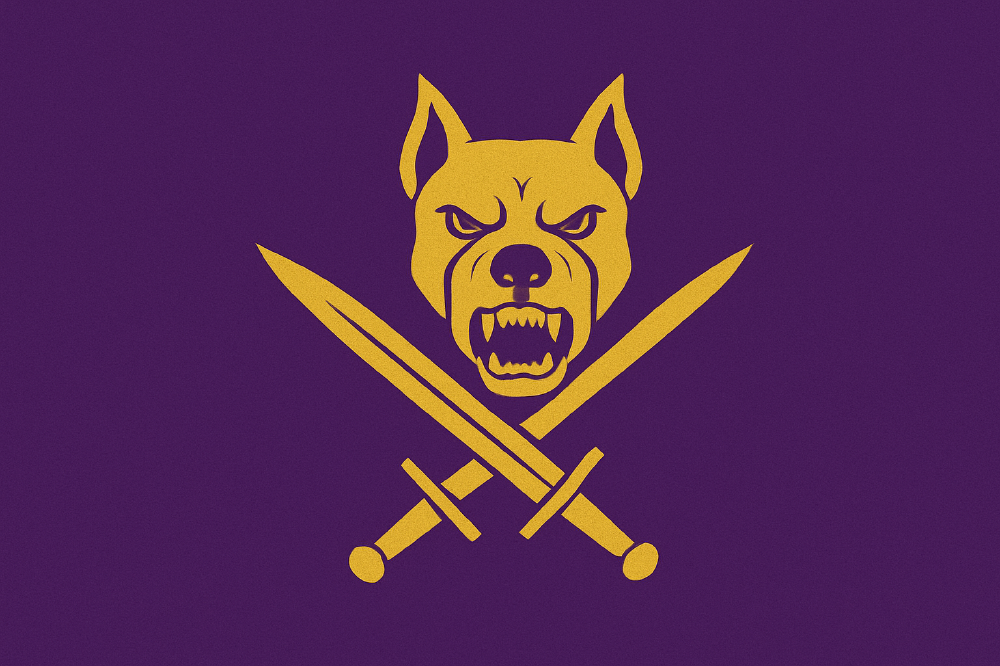| National Factbook |
| Flag: |

|
| Nation Name: |
Peoples Republic of Valoria |
| Leader Name: |
Kael Dravus |
| Currency: |

Gold Standard |
| National Animal: |

Dog |
| History: |
A History of The People’s Republic of Valoria
The People’s Republic of Valoria is a nation on Africa’s western coast, forged through conflict and guided by the principle that valor, not privilege, defines citizenship. Its history is marked by resilience, sacrifice, and the enduring leadership of its founding president, Kael Dravus.
Pre-Colonial Roots
For generations, Valoria’s fertile valleys and mountain fortresses were home to warrior-agrarian clans. Authority was earned, not inherited—chieftains were chosen from those who proved themselves in defense of the people. Over time, these traditions formed the League of Shields, a confederation that defended Valoria against raiders and slavers while preserving its cultural identity.
Colonial Rule
During the era of European conquest, Valoria was claimed and divided by colonial powers. Its resources were extracted, its coast fortified, and its people pressed into hard labor. Yet, many Valori were also conscripted into colonial regiments, where they learned modern tactics and weapons—knowledge that would later fuel rebellion.
The War of Independence
Oppression sparked resistance, first in scattered uprisings and later in a coordinated struggle led by the Valorian Liberation Front (VLF). Villages gave shelter, farmers became fighters, and guerrilla campaigns harassed colonial forces across the rugged highlands.
At the heart of the movement was Kael Dravus, once a decorated soldier in the colonial army who defected to lead his people. Renowned for his strict discipline and refusal to tolerate corruption, Dravus transformed fractured militias into a united liberation force. His message—that a republic founded on merit and sacrifice would rise from colonial rule—rallied the nation.
After years of fierce struggle, the colonizers withdrew. In the capital, with the ruins of the governor’s palace behind him, Dravus proclaimed the birth of the People’s Republic of Valoria.
The Republic Under Dravus
Kael Dravus assumed the presidency with both military and civilian authority, refusing to crown himself a king or dictator. Instead, he oversaw the drafting of a constitution rooted in federalism and meritocracy. Political power and social honor, under this system, must be earned through service—whether in the military, civil service, or community leadership.
Though criticized abroad as overly militarized, Valoria became known at home as a disciplined, self-reliant republic. Military academies and civic schools instilled a culture of merit, while Valorian peacekeepers gained respect abroad for their professionalism.
Modern Valoria
Today, Kael Dravus remains president, regarded by many as both a liberator and a living guardian of Valoria’s founding ideals. His presence symbolizes continuity and stability, though some question how the republic will transition when his era eventually ends.
Valoria itself stands as a regional power: proud, disciplined, and fiercely protective of its sovereignty. While economic inequality and reliance on mineral exports present challenges, its people remain bound by the creed that has guided them since independence—valor above privilege, service above self. |
| Geography |
| Continent: |
Africa |
| Land Area: |
20,277.68 sq. km |
| Terrain: |
|
| Highest Peak: |
Mt. Nimba,
4,021 meters
|
| Lowest Valley: |
Sebkha Tah,
-55 meters
|
| Climate: |
|
| People & Society |
| Population: |
870,059 people |
| Demonym: |
Valori |
| Demonym Plural: |
Valorians |
| Ethnic Groups: |
- 0.0% |
| Languages: |
English - 100.0% |
| Religions: |
Christian - 100.0% |
| Health |
| Life Expectancy: |
77 years |
| Obesity: |
5% |
| Alcohol Users: |
45% |
| Tobacco Users: |
10% |
| Cannabis Users: |
34% |
| Hard Drug Users: |
2% |
| Economy |
| Description: |
The Economy of the People’s Republic of Valoria
Valoria’s economy is shaped by its struggles for independence, military ethos, and abundant natural resources. From the earliest days, its leaders emphasized self-reliance, viewing economic strength as inseparable from national sovereignty.
Resource Wealth
Valoria sits atop rich deposits of cobalt, gold, and rare earth minerals, as well as fertile agricultural valleys. These resources once attracted colonial exploitation but now form the backbone of state revenue. The government strictly controls mining through state-owned corporations, arguing that such wealth belongs to the people. Foreign firms are allowed limited partnerships but only under terms that ensure majority Valorian ownership.
Military-Industrial Development
The war for independence left Valoria with a deep respect for industrial self-sufficiency. The government invested early in a domestic arms and defense sector, producing uniforms, light weapons, and armored vehicles. This industry not only sustains Valoria’s well-equipped military but also generates export revenue, especially to other African nations seeking affordable equipment.
Agriculture & Food Security
Historically, Valoria’s highlands supported warrior-farmers, and agriculture remains central. The state prioritizes food security programs, subsidizing staple crops like maize and sorghum while encouraging collective farming cooperatives. Agricultural exports (tea, coffee, and cashew nuts) are key to foreign trade, but the government is cautious about over-dependence on cash crops.
Regional Trade & Infrastructure
Kael Dravus’s government has invested heavily in roads, rail, and port facilities, seeking to make Valoria a trade hub for its landlocked neighbors. Its well-trained engineering corps, originally built for military logistics, has been central in constructing these projects. Regional trade alliances give Valoria leverage, though tensions arise when its assertive policies clash with neighbors.
Challenges
Despite its progress, Valoria faces significant obstacles:
• Economic inequality persists, with wealth concentrated in mining regions and urban centers.
• Heavy state control sometimes discourages foreign investment.
• Dependence on mineral exports makes the economy vulnerable to price fluctuations.
• The prioritization of military industries often diverts resources from consumer goods and healthcare.
The Valorian Creed in Economics
Just as in politics, Valoria’s economy reflects its founding creed: valor above privilege. Jobs in state industries, agriculture, and civil service are awarded on merit, with preference given to veterans and those who have completed public service. Corruption is harshly punished, and economic policy is presented as an extension of national defense.
This makes Valoria’s economy state-controlled but meritocratic, resource-heavy, with a military-industrial backbone — very much tied to its independence history and Dravus’s vision of sovereignty. |
| Average Yearly Income: |
$97.82 |
| Gross Domestic Product (GDP): |
$2,467,810,475.00 |
| GDP per Capita: |
$2,836.37 |
| Gross National Income (GNI): |
$1,581,308,845.00 |
| Industries: |
|
| Military |
| History: |
The Military History of the People’s Republic of Valoria
From the moment Valoria won its independence, the military has been more than an institution — it has been the backbone of the nation. Rooted in the traditions of the League of Shields and forged during the War of Liberation, the Valorian Armed Forces (VAF) are regarded as both the protector and the soul of the republic.
Origins in the Liberation War
The VAF grew out of the Valorian Liberation Front (VLF), which fought the colonizers with discipline and unity. Unlike other resistance movements, the VLF enforced a strict code of honor: no looting, no harming civilians, and absolute loyalty to the cause. This ethos carried into the modern armed forces, where service is considered the highest form of citizenship.
Structure and Modernization
After independence, President Kael Dravus reorganized the VLF into the Valorian Armed Forces, blending guerrilla traditions with modern doctrine. Military academies were established to train a new officer corps based on merit rather than family connections. Over time, Valoria developed a reputation for having one of the most professional, disciplined militaries in Africa, often called upon for peacekeeping missions.
Core Branches
• Valorian Army – the largest branch, famed for its mountain infantry and armored divisions.
• Valorian Air Guard – a compact but capable force, specializing in close air support and reconnaissance.
• Valorian Naval Command – patrols the coastline and maintains fast-attack craft to secure trade routes.
Elite & Specialty Units
To embody Valoria’s warrior heritage, several elite units were created, many with symbolic names that reflect courage and ferocity:
• The Iron Fangs – special forces commandos trained in guerrilla warfare, named after the legendary dogs said to guard ancient Valorian chiefs.
• Shieldbearers – an elite infantry regiment that traces its lineage directly to the League of Shields. Known for their unshakable defense in battle.
• The Stormhammers – a mechanized assault unit specializing in rapid armored offensives, often the first into contested zones.
• Night Vultures – an airborne reconnaissance and paratrooper unit, masters of infiltration and night operations.
• Dravus Guard – the presidential guard and most prestigious unit, sworn personally to defend the republic and its leader.
• Spear of Valor – a ceremonial but battle-ready cavalry regiment, symbolizing both tradition and modern pride.
Legacy and Identity
In Valoria, military service is not only a career but a civic duty. Veterans are honored with priority in leadership roles, and even civilians see the military as an extension of national identity. The motto of the VAF, carved into the gates of its academy, is simple:
“Valor Above Life.” |
| Soldiers: |
90,000 |
| Tanks: |
1,793 |
| Aircraft: |
90 |
| Ships: |
19 |
| Missiles: |
0 |
| Nuclear Weapons: |
0 |
| Last Updated: 08/30/2025 01:33 am |













